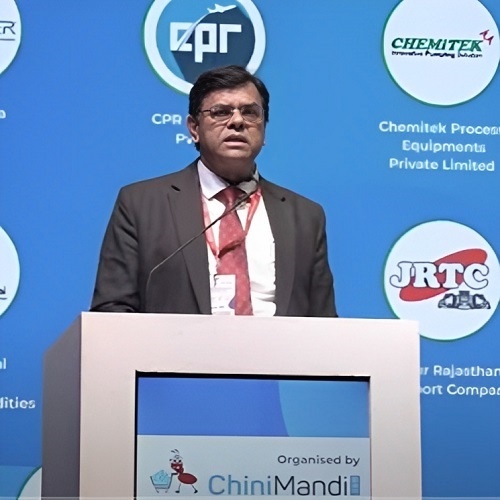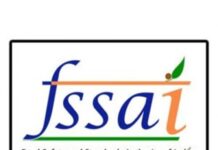The sugar industry continues to be in the news, with all eyes on this year’s ethanol blending programme. After the Government decided to ban ethanol production directly from sugarcane juice/syrup, the Order was amended within a week, and the Government asked Oil Marketing Companies (OMCs) to revise allocation from sugarcane juice/syrup and B-Heavy molasses, capping total sugar diversion for ethanol production to 17 LMT.
Speaking exclusively to ChiniMandi, Abinash Verma, ethanol expert, ex-bureaucrat, former DG ISMA and now Promoter of grain based ethanol plant said that the Order of 7/12/2023 and now of 15/12/2023, read along with the Food Secretary’s statement that only 17 lakh metric tons of sugar will be diverted to ethanol in 2023-2024, restricts ethanol production from sugarcane juice and B-Heavy molasses to a total of around 130 crore litres. However, with more C-Heavy molasses production now, the 130-135 crore litres of ethanol production will increase by a few more crore litres. So the bids of 562 crore litres for 2023-2024, including bids from grains, will reduce to 430-440 crore litres.
He said that unless there is a strong and conscious attempt to increase the use of alternate raw materials like maize and rice, ethanol blending may fall to around 8-9% in 2023-2024.
The Government in July had stopped grain-based distillery plants from producing ethanol from FCI rice. However, recent reports suggest that FCI might have twice the buffer requirement by the end of the current procurement season. Should the ban on FCI rice be revoked immediately? Abinash Verma answering this said that the buffer norms of FCI for rice is 7.61 million tons as on 1st January, whereas the reported rice stocks with FCI was at 40 million tons (including FCI paddy stocks with rice millers) in the end of Nov 2023, more than 5 times of the buffer norms.
He said, “Surplus FCI rice was the main raw material for grain-based ethanol producers, till July 2023. It was subsidised by the Government and sold at Rs.20,000 per ton to distilleries, because of which grain-based ethanol production was viable. It also gave confidence to banks about raw material availability. But that is being stopped now, and coupled with very high and unviable price of broken rice and maize, banks are already showing reluctance to fund new grain-based ethanol projects.”
“Therefore, as also to compensate for the fall in ethanol from sugarcane/molasses, I personally feel that during 2023-2024 ESY, to achieve 12% blending again this year, the Government will very soon either allow use for surplus FCI rice for ethanol again or significantly increase the price of ethanol from maize and broken rice as also CHM”, he said.
The Government wants to promote maize as feedstock for grain-based distilleries. Abinash Verma said that in the long run, maize will have to be the most used raw material for ethanol production. As compared to rice and sugarcane, maize uses substantially less water. He said that the most important advantage is that there is a massive potential of increasing per hectare yield of maize in India from the current 3.5 tons per hectare to 5.5 tons (world average is 6 tons), which will increase maize production from the current 34 million tons per annum to 54 million tons, without the need of increasing acreage under maize. This additional 20 million tons of maize, at the rate of 380 litres of ethanol per ton of maize, can comfortably give the country 760 crore litres of ethanol.
He said that there are several challenges which need to be overcome. “The first challenge will be to arrange and distribute such high yielding maize varieties, which give yields of 5.5 tons per hectare, to farmers across the country. There are these hybrid maize varieties which do already give 7-8 tons per hectare in some parts of the country. Production and availability of such varieties, as per climate and soil conditions, will have to be ensured. The second challenge will be to improve the ethanol price for maize, (current Rs.66 per litre is inadequate). Thirdly, maize is not an easy raw material to handle in our distilleries. We will all need a few seasons to adapt to maize and fine tune our distilleries to the challenges maize pose as a feedstock for us.”
On the charter of demand to the Government to support grain-based ethanol plants, Abinash Verma said that the first request is that the price of ethanol for grains should be better and dynamic. Unlike sugarcane, which is available at a Government fixed FRP and the availability of the same to sugar mills is guaranteed with reserved cane areas, the market price of maize and rice are extremely volatile, and availability also is not easy. Hence, the Government/OMCs have to be more proactive with ethanol price and recognise market conditions to accordingly change ethanol prices faster.
“The ethanol payments by OMCs have to be quicker, say within 7 days from receipt of ethanol at their depots and uploading of invoices on their Portal. The current 21 days from receipt of ethanol is unreasonably high, considering that we have to make our payments to suppliers in a couple of days” he added.
Verma said that the Government should also fix the price of ethanol produced from grain-based distilleries, as in the case of ethanol produced from sugarcane/molasses-based distilleries. He also ascertained that the Government should quickly restart the use of surplus FCI rice for ethanol production.
As the 2024 Union Budget is around the corner, he asserts that the Government should give incentives for the production of flex-fuel vehicles (FFVs) in the country, which can run on any blend of petrol-ethanol including pure ethanol. The GST should be reduced from the current 28% plus to 5%, at par with EVs or even to 12%. This will make it affordable to consumers.
The ethanol sector in India is still at a nascent stage and large capacities are getting built up very fast. He foresees a lack of adequate demand for ethanol by the vehicle users to consume 1020 crore litres of ethanol required for 20% blending in 2025-26, because only 25% of vehicles will be E-20 compliant by then and the rest will be only E-10 compliant. “The solution to this lies in the increased use of FFVs which can increase the use of ethanol manifold. However, that remains a distant dream, as the Indian roads are yet to see FFVs getting rolled out in the next couple of years in substantial numbers,” he concluded.













DHANIYAM
GRAIN BASED DISTILLERY IS VERY DIFFICULT TO PROCURE HUGE QTY OF MAIZE WITH IN THE NEAREAST AREA.AT PRESENT THE AVAILABILITY OF MAIZE IN THE LOCAL MARKET IS FULLY UTILISED BY CATTLE FEED PRODUCTION. THEREFORE GOVT SHOULD ALLOW DISTILLERIES AND ALSO IMPORTERS TO IMPORT MAIZE FROM OTHER COUNTRIES WITH ZERO DUTY. IN ADDTION TO THAT THE EHTANOL RATE FOR PRODUCING FROM MAIZE SHOULD BE FIXED ON THE BASIS OF MAIZE PROCUREMENT RATE